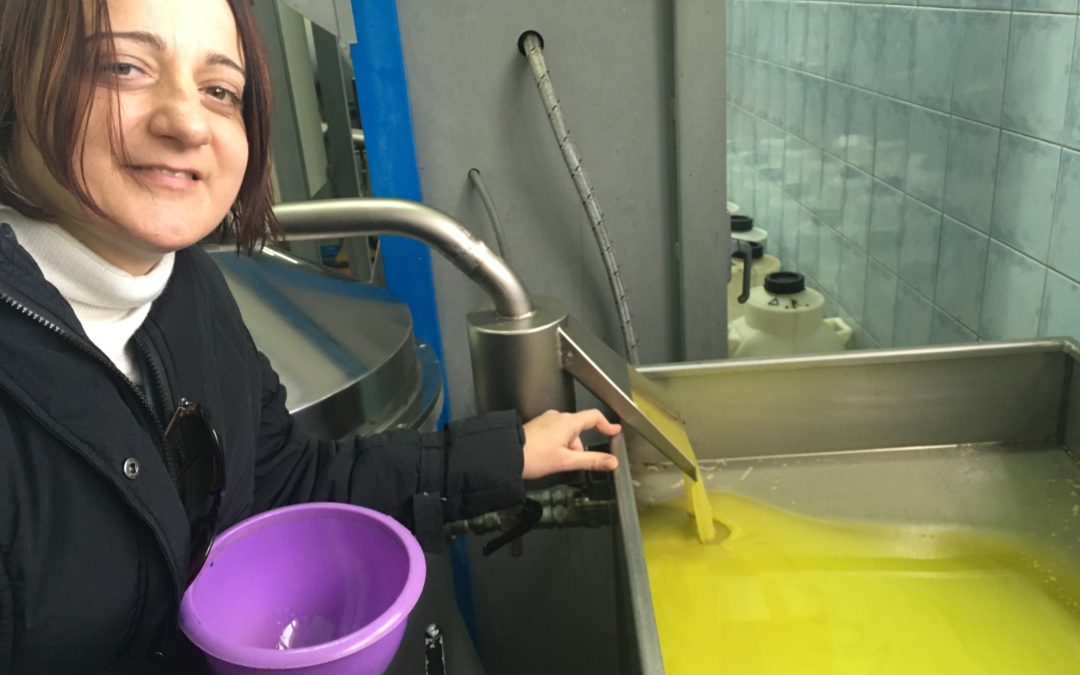At a glance, the answer to this question is pretty simple. The juice that is extracted from olives once they are pressed into oil. But once they are pressed, cold pressed for that matter, we see different variants of olive oil available, virgin, extra virgin and pomace olive oil.
So what exactly is this ‘Extra Virgin Olive Oil’?
We often ask consumers if they know the difference between extra virgin olive oil and virgin olive oil and many consumers answer that “extra virgin olive oil comes from the first cold pressing and virgin olive oil doesn’t”. There is definitely some truth in this answer as extra virgin olive oil must be made from the first cold pressing of olives. However this first cold pressing doesn’t guarantee that the olive oil is extra virgin in quality. So how do we know?
Before we get into that, let’s understand what is cold pressing. Cold pressing uses a hydraulic press to extract juice from olives as opposed to other methods such as centrifugal presses. The hydraulic press applies pressure to the fruit and as it is squeezed, the juice is extracted. This is the optimum method to preserve the nutrients and goodness in the olives. A centrifugal press on the other hand uses a fast spinning metal blade which separates the juice from a fruits flesh via centrifugal force. The juice and pulp are then separated into different containers. The problem with centrifugal presses is that the fast-spinning metal blade generates heat, which destroys some nutrients in the fruit and vegetables in the process.
Cold pressing for olive oil is regulated and must take place at below 27 degrees. Although here in Britain, we tend to consumer olives and olive oil in greater quantities in summer months, olives are actually a winter fruit and their ripening and harvesting takes place from November to December. The last season in Crete was quite extraordinary. The temperature throughout November was very warm and the olives had not started the ripening process which is when they are ready for picking until late December. The temperature then dropped very suddenly so we began our harvest and during these days, the average daytime temperature was 15 degrees. So this season’s Olive Branch extra virgin olive oil is the result of 15 degree cold pressing.
Going back to what differentiates extra virgin olive oil to virgin and pomace olive oils. We now know that extra virgin olive oil must come from olives that are cold pressed at below 27 degrees. Once the olives are pressed and the oil is produced, we measure the acidity of the oil. The acidity refers to the volume of acid per 100ml and the readings we get from this measurement determine the categorisation of extra virgin olive oil, which are as follows:
<0.8% acidity: extra virgin
0.8% – 2.0% acidity: virgin
>2.0% acidity: pomace
As the olive starts to ripen, the acidity will increase as fruit sugar levels go up. The ripening produces a sweeter tasting fruit but with an increasing acidity, the nutritional values are not as beneficial as in low acidic fruit. You’ll notice the low acidity when you taste your olive oil from the slight bitterness. We pick our olives when they just start to ripen, so they are largely green in colour and produce oil with a naturally low acidity. All our olives are cold pressed on the day of picking so the olives don’t get a chance to oxidise and we fully retain the naturally low acidity and supreme fresh flavour.
(image shows our founder Maria at the co-operative in December 2016 as the new harvest oil was being pressed)

